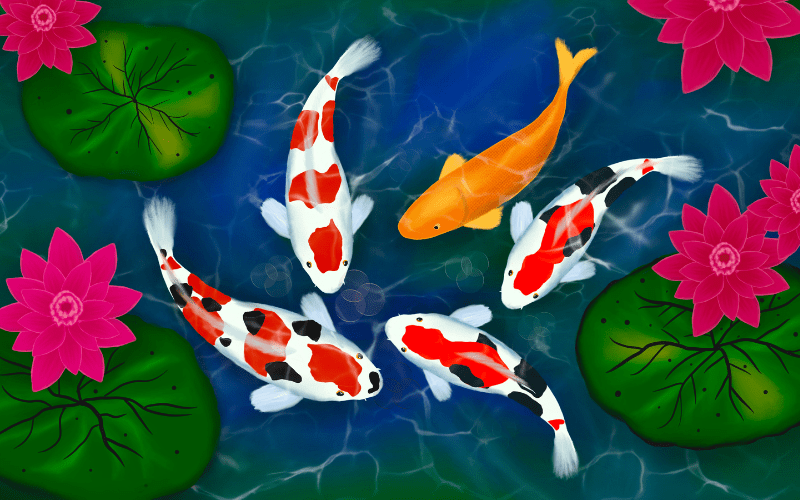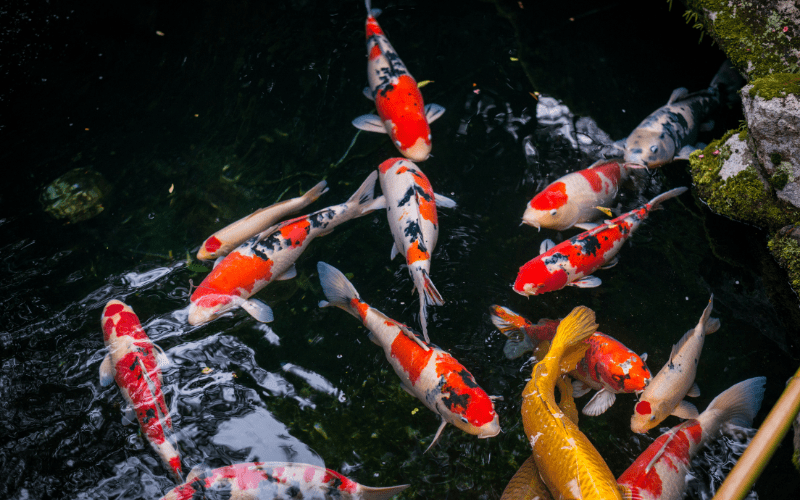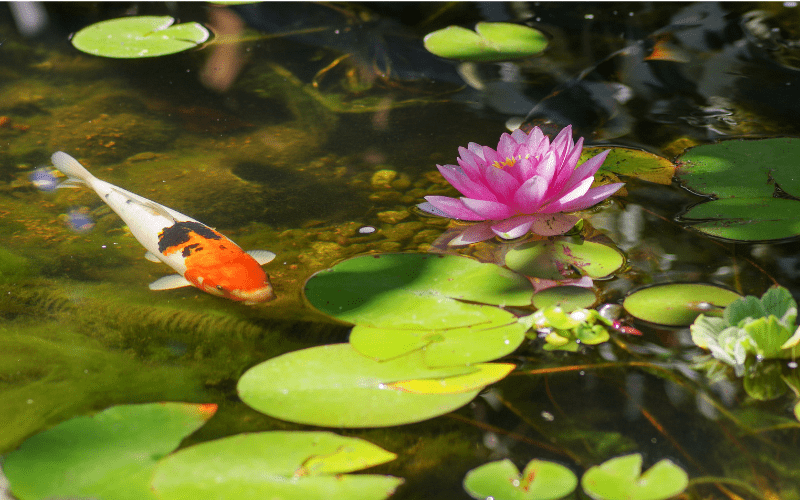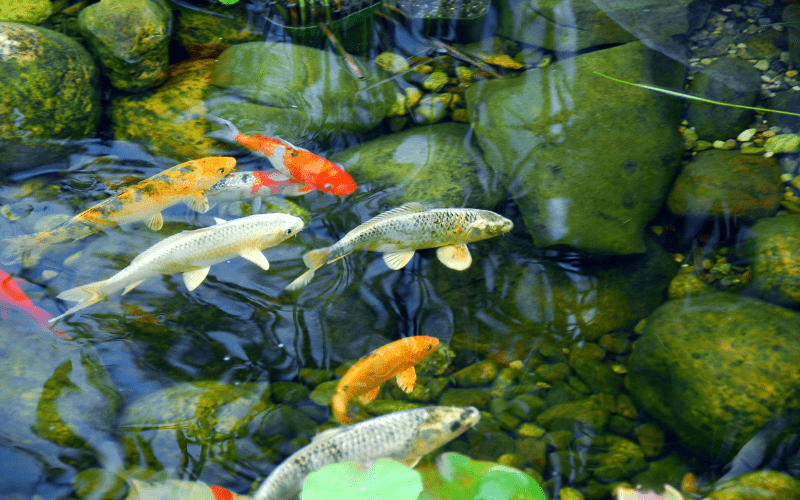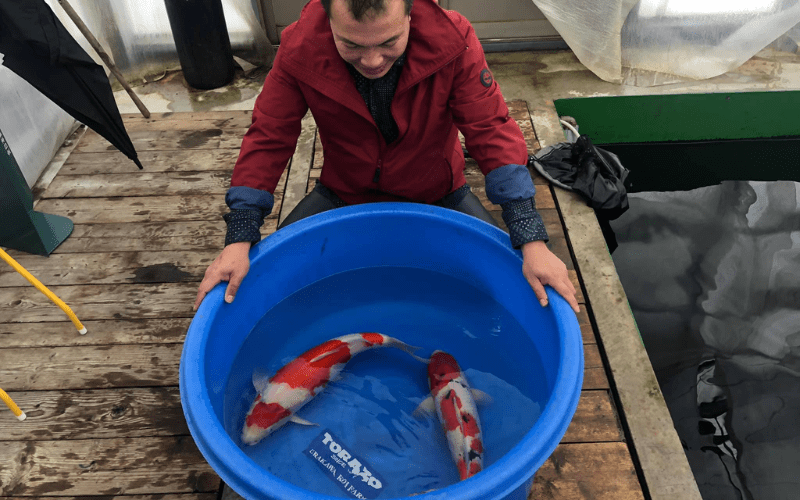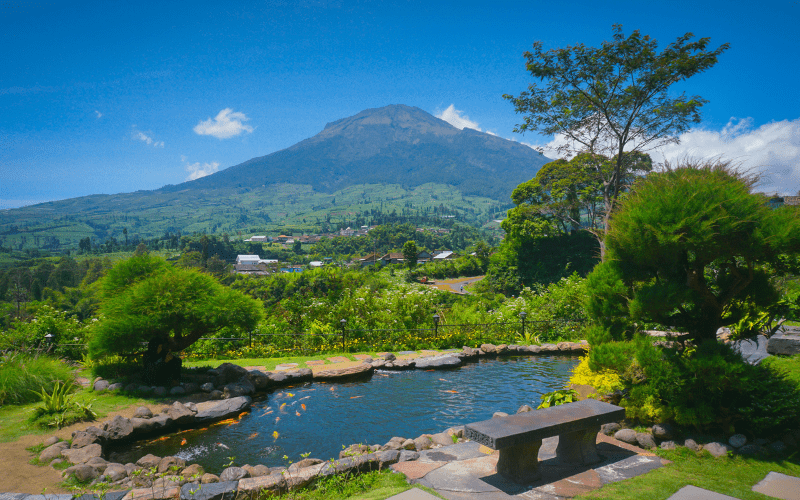Koi fish are a beloved addition to ponds worldwide, known for their beauty, grace, and ability to thrive in various environments when cared for properly. These colorful fish have been part of Japanese culture for centuries and are often considered symbols of luck, strength, and perseverance. However, to truly unlock the longevity of your koi fish, which can exceed 25-30 years, it’s essential to understand their care requirements. In this blog, we’ll explore koi fish care tips that can help maximize their lifespan, ensuring they live a long, healthy life in your pond.
Understanding Koi Fish Basics
Before diving into care practices, it’s important to understand the fundamentals of koi fish. Koi are a type of ornamental carp, selectively bred for their vibrant colors and patterns. Some popular varieties include Kohaku (white with red markings), Taisho Sanke (white, red, and black), and Showa (black with red and white markings). These varieties are known not just for their striking appearance but also for their ability to adapt to various environmental conditions.
While koi fish are generally hardy, they require specific care to thrive and reach their full lifespan potential. By focusing on their habitat, diet, health monitoring, and seasonal care, you can create an environment that promotes both growth and longevity.
Optimal Pond Environment
The first and most crucial aspect of koi care is maintaining optimal water quality. Koi fish are highly sensitive to their environment, particularly water quality. Clear, clean water not only supports their health but also prevents stress and disease. Regularly test your pond’s water for ammonia, nitrite, and nitrate levels, which should remain minimal. Keep the pH level between 7.0 and 8.5, as this range provides the ideal balance for koi fish.
At Torii Koi And Pond, we emphasize the importance of maintaining proper water temperature. Koi thrive in water temperatures ranging from 50°F to 78°F, with a preference for warmer temperatures in summer and cooler conditions during winter.
Pond Size and Filtration
Koi are large, active fish that require ample space to swim and grow. Ideally, your pond should be at least 1,000 gallons to accommodate their size and movements. A larger pond allows koi to grow to their full potential and reduces the likelihood of territorial disputes or overcrowding, which can lead to stress.
Additionally, the right filtration system is key to maintaining clear, healthy water. A good pond filter helps remove debris, fish waste, and excess nutrients, which can otherwise lead to harmful algae blooms. Ensure that your pond’s filtration system is appropriately sized for your pond’s volume and includes mechanical, biological, and chemical filtration components.
Shelter and Shade
While koi love sunlight, excessive exposure can increase the risk of algae blooms and water temperature spikes, both of which can negatively impact their health. Providing shade in the form of floating plants or shade sails can help regulate water temperature and prevent overexposure to UV rays. Shelter is also important to protect koi from predators like birds and raccoons.
Nutrition and Feeding Habits
Balanced Diet for Koi
Proper nutrition plays a significant role in extending the lifespan of koi fish. Koi require a balanced diet rich in protein, fats, and essential vitamins. At Torii Koi And Pond, we recommend high-quality pellets formulated for koi, as these provide all the nutrients they need for growth and vitality. Additionally, koi enjoy occasional treats like earthworms, lettuce, and oranges, which can be used to supplement their regular diet.
Be mindful of seasonal changes in feeding habits. In warmer months, koi are more active and require more food to support their metabolism and growth. However, in the cooler months of fall and winter, their metabolism slows down significantly, and overfeeding can lead to digestive issues. Adjust feeding amounts accordingly to prevent overfeeding.
Disease Prevention and Health Monitoring
Despite being resilient, koi are prone to certain diseases, especially in poor water conditions. Common health issues include Ich (a parasitic infection), fin rot, ulcers, and swim bladder problems. Early detection and treatment are critical to preventing these diseases from worsening.
At Torii Koi And Pond, we recommend setting up a quarantine tank for new fish before introducing them into your main pond. This precaution helps prevent any potential diseases from spreading to your existing koi population. Additionally, regularly check your koi for symptoms of illness such as lethargy, loss of appetite, or abnormal swimming behavior.
Regular Health Checks
Observing your koi daily is an excellent habit for spotting early signs of stress or illness. A healthy koi will swim actively, eat regularly, and display bright, vivid colors. Any changes in behavior, such as swimming near the pond’s surface excessively or isolating from other fish, should be noted and investigated.
Treating Diseases
If your koi develop a disease, early treatment is essential. Common treatments include salt baths, antibiotics, or adjusting water conditions. Some diseases may require professional intervention or the use of specific medications, so consulting with a koi expert can save time and ensure the right approach is taken.
Seasonal Care for Koi Fish
Spring and Summer Care
During the warmer months of spring and summer, koi are at their most active. Their metabolism speeds up, requiring increased feeding and care. It’s also important to regularly clean your pond filter, as fish waste and debris will accumulate faster in warm weather. At Torii Koi And Pond, we offer advice on preparing your pond for summer, including tips on aeration and filtration.
Fall and Winter Care
As the weather cools down in fall and winter, koi become less active and require less food. To ensure their comfort, reduce feeding to once every few days and switch to a wheat-germ-based food that’s easier to digest. When water temperatures drop below 50°F, stop feeding entirely, as koi can no longer digest food properly.
Winterizing your pond is crucial in colder climates. Ensure your pond is deep enough to prevent freezing and consider installing a pond heater or de-icer to keep the water at a stable temperature. Additionally, reduces water circulation to prevent drastic temperature changes during the night.
Lifespan-Extending Practices
Stress Reduction Techniques
Stress is one of the leading causes of illness and premature death in koi. To minimize stress, maintain clean water, provide ample space, and avoid overhandling the fish. Adding new koi to the pond should be done gradually to prevent territorial disputes and ensure all fish adjust smoothly to their environment.
Breeding Considerations
Breeding is a natural part of koi life, but frequent breeding can strain female koi, reducing their lifespan. At Torii Koi And Pond, we recommend monitoring your koi during the breeding season to ensure females don’t become overly stressed. Providing high-quality food and clean water during this time can help keep your koi healthy and resilient.
Expert Advice and Long-Term Care
Consulting Koi Experts
For koi enthusiasts who want to provide the best care possible, seeking professional advice is always a smart choice. Experts at Torii Koi And Pond can offer guidance on pond maintenance, filtration systems, and disease prevention strategies, ensuring your koi enjoy long, healthy lives.
Consistent Maintenance Routines
Finally, the key to maximizing your koi’s lifespan is consistency. Regular pond maintenance, water testing, and health checks are essential for long-term care. By adhering to a routine, you can prevent many of the common issues that shorten the lifespan of koi fish.
Key Points:
- Maintaining clean water with proper pH levels, temperature, and filtration is essential for koi health.
- A balanced diet and seasonal feeding adjustments ensure optimal growth and longevity.
- Regular health checks and prompt treatment of diseases are critical for preventing illness.
- Koi thrive in ponds with adequate space, shelter, and shade.
- Seasonal care, such as winterizing the pond, protects koi during extreme weather conditions.
FAQs:
1. How long do koi fish live?
Koi can live for 25-30 years or longer with proper care.
2. What do I feed my koi fish?
Koi thrive on a diet of high-quality pellets, supplemented with fresh vegetables and occasional protein treats like earthworms.
3. How do I keep my koi pond clean?
Install an appropriate filtration system, regularly test water quality, and clean the pond filter to maintain a healthy environment.
4. Can koi fish live through the winter?
Yes, koi can survive winter in deep ponds, but it’s important to reduce feeding and maintain stable water temperatures.
5. How do I prevent koi fish diseases?
Maintain clean water, quarantine new fish, and conduct regular health checks to detect and treat illnesses early.
At Torii Koi And Pond, we’re dedicated to helping koi owners provide the best care for their fish, ensuring a long, healthy lifespan for these incredible creatures.

